Study the Possible Effect of Inula Graveolens L. Methanolic Extract on Antioxidant Status i n Track and Field Male Athletes
محتوى المقالة الرئيسي
الملخص
The antioxidant activity of Inula graveolens L. methanolic extract could be attributed to its higher content of both phenolic and flavonoid compounds. Therefore, the present study was undertaken to assessment the possible effect of methanolic extract of Inula graveolens L. plant as an improvement of enzymatic and non-enzymatic antioxidant status in track and field male athletes. Levels of enzymatic, non-enzymatic antioxidants and other general biomarkers were determined in serum and urine before (D0) and after (D30) supplementation of 400 mg of MEIG or placebo once at day for 30 day in elite group. This study showed increased significantly (P < 0.01) in the levels of vitamines A, E and C with compared to placebo group. On the other hand, no significant variation was seen in the levels of CAT, GRx, and SOD activities was disclosed; whereas, such was not the case as regards glutathione peroxidase (GPx). This enzyme activity decreased during the placebo period (p < 0.05) while remaining unaltered throughout the MEIG intake period. Same table reflect that the CK activity reached 686 ± 1.5 and 470 ± 1.4 (U/L) after placebo and MEIG periods, respectively (P < 0.01). Furthermore, data obtained, was shown that during placebo supplementation, urinary excretion of isoprostanes was markedly increased, disclosing thereby, an increase in oxidative injury and inflammation (1.29 ± 0.11 vs 1.75 ± 0.18 ng/mg creatinine at D0 and D30, respectively; p < 0.05). Such an increase did not appear during the MEIG supplementation (1.35 ± 0.12 vs 1.37 ± 0.13 ng/mg at D0 and D30, respectively). Finally, no significant difference on cholesterol and triglycerides was evidenced whatever the period (placebo or MEIG). Regardless of the capsule content the athletes had, no modification of urea concentration was observed; whereas, ferritin concentration was significantly reduced in both cases. Also, Hb concentration was not modified in the placebo group; however, MEIG supplementation increased Hb concentration, as opposed to placebo intake, respectively (12.8 ± 0.3 vs 12.6 ± 0.2 g/dL, p < 0.05).
تفاصيل المقالة

هذا العمل مرخص بموجب Creative Commons Attribution-NonCommercial 4.0 International License.
المراجع
Noor R., S.Mittal, J.Iqbal (2002) Superoxide dismutase - applications and relevance to human diseases. Med.Sci.Monit. 8:RA210-215.
Urso M.L., P.M.Clarkson (2003) Oxidative stress, exercise, and antioxidant supplementation. Toxicology 189:41-54.
Aguilo´ a A., Taulera P., Fuentespinab E., Tura J. A., Co´rdovac A., Pons A. Antioxidant response to oxidative stress induced by exhaustive exercise. Physiology & Behavior, 2005; 84: 1–7. doi:10.1016/j.physbeh.2004.07.034
Cachia O, Benna JE, Pedruzzi E, Descomps B, Gougerot-Pocidalo CL, Leger CL. Alpha-tocopherol inhibits the respiratory burst in human monocytes. Attenuation of p47(phox) membrane translocation and phosphorylation. J Biol Chem 1998;273:32801– 5.
Pfeiffer JM, Askew EW, Roberts DE, Wood SM, Benson JE, Johnson SC, et al. Effect of antioxidant supplementation on urine and blood markers of oxidative stress during extended moderate-altitude training. Wilderness Environ Med 1999;10:66– 74.
Kanter MM, Nolte LA, Holloszy JO. Effects of an antioxidant vitamin mixture on lipid peroxidation at rest and postexercise. J Appl Physiol 1993;74:965– 9.
Chakravarty, H.L. (1976) Plant wealth of Iraq. Ministry of Agriculture & Agrarian Reform, Baghdad, Iraq, pp. 304.
Al-Fartosy, A.J.M. (2013) Some pharmacological studies on the methanolic extract of Inula graveolense L. J. Biomedical Science and Engineering, 2013, 6, 1040-1049. http://dx.doi.org/10.4236/jbise.2013.611130.
Winterbourne CC., Hawking RE, Brain M. and Carrel RW. Determination of superoxid dismutase. J. Lab. Clin. Med, 1975. 2: 337-341.
Mueller S., Riedel HD. and Stremmel W. Determination of Catalase activity at physiological hydrogen peroxide concentration. Analy. Biochem., 1997, 245:55- 60.
Dolphin D., Poulson R. and Avreamovic O. Glutathione: chemical, Biochemical and metabolic aspects. J. wiley and Sons., 1989, 1-6.
Flohe L, Gunzler WA. Assays of glutathione peroxidase. Methods Enzymol 1984;105:114–21.
Szasz G, Gruber W and Bernt E. Creatine kinase in serum:1 Determination of optimum reaction conditions. J. Clinical chemistry, 1976, 22(5): 650-656.
Gawlik MT., Gawlik MB., Gorka A. and Brandy J. Optimization and validation of a high–performance liquid chromatographic method for determination of β–and -tocopherol in rat plasma and erythrocytes. Acta Chromalographica, 2003, 13: 185–195.
Zhao B., Tham SY., Lu J., Lai MH., Lee LKH. and Moochhala SM. Simultaneous determination of vitamins(C, E) and β-carotene in human plasma by high–performance liquid chromatography with photodiode–array detection. J. Pharm. Pharmaceut. Sci, 2004, 7(2): 200-204.
Zaman Z., Fielden P. and Frost PG. Simultaneous determination of vitamins A and E and Carotenoids in plasma by reversed–Phase HPLC in elderly and younger subject. Clin. Chem. 1993, 39 (11): 229-34.
Rumelin A., Fauth U, and Halmagyi M. Determination of ascorbic acid in plasma and urine by high performance liquid chromatography with ultraviolet detection. Clin Chem. Lad, Med., 1999, 37: 533-36.
Powers, S.K. and Hamilton, K. (1999). Antioxidants and exercise. Clinics in Sports Medicine 18, 525-536.
Hess D, Keller HE, Oberlin B, Bonfanti R, Schuep W (1991) Simultaneous determination of retinol, tocopherols, carotenes and lycopene in plasma by means of high-performance liquid chromatography on reversed phase. Int J Vitam Nutr Res 61:232–238.
Willett WC, Stampfer MJ, Underwood BA,Taylor JO,Hennekens CH (1983) Vitamins A, E, and carotene: effects of supplementation on their plasma levels. Am J Clin Nutr 38:559–566.
Rokitzki L, Logemann E, Sagredos AN, Murphy M, Wetzel-Roth W, Keul J (1994) Lipid peroxidation and antioxidative vitamins under extreme endurance stress.Acta Physiol Scand 151: 149–158.
Lemoyne M, Van Gossum A, Kurian R, Ostro M, Axler J, Jeejeebhoy KN (1987) Breath pentane analysis as an index of lipid peroxidation: a functional test of vitamin E status. Am J Clin Nutr 46: 267–272.
Rivers JM (1987) Safety of high-level vitamin C ingestion. Ann N Y Acad Sci 498:445–454.
Linder M (1991) Nutritional Biochemistry and Metabolism. Elsevier Science, New York.
Schroder H, Navarro E, Mora J, Galiano D, Tramullas A (2001) Effects of alphatocopherol, beta-carotene and ascorbic acid on oxidative, hormonal and enzymatic exercise stress markers in habitual training activity of professional basketball players. Eur J Nutr 40: 178–184.
Prior, R. and Cao, G. (1999). In vivo total antioxidant capacity: comparison of different analytical methods. Free Radical Biology & Medicine 27, 1173-1181.
Vasankari, T.J., Kujala, U.M., Vasankari, T.M., Vuorimaa, T. and Ahotupa, M. (1997). Increased serum and low-densitylipoprotein antioxidant potential after antioxidant supplementation in endurance athletes. American Journal of Clinical Nutrition 65, 1052-1056.
Palazzetti, S., Rousseau, A., Richard, M., Favier, A. and Margaritis, I. (2004). Antioxidant supplementation preserves antioxidant reLafay et al. 479 sponse in physical training and low antioxidant intake. The British Journal of Nutrition 91, 91-100.
Tauler, P., Aguilo, A., Gimeno, I., Fuentespina, E., Tur, J. and Pons, A. (2006). Response of blood cell antioxidant enzyme defences to antioxidant diet supplementation and to intense exercise. European Journal of Nutrition 45, 187-195.
Klapcinska, B., Kempa, K., Sobczak, A., Sadowska-Krepa, E., Jagsz, S. and Szoltysek, I. (2005). Evaluation of autoantibodies against oxidized LDL (oLAB) and blood antioxidant status in professional soccer players. International Journal of Sports Medicine 26, 71-78.
Margaritis, I., Palazzetti, S., Rousseau, A., Richard, M. and Favier, A. (2003). Antioxidant supplementation and tapering exercise improve exercise-induced antioxidant response. Journal of the American College of Nutrition 22, 147-156.
Tauler, P., Aguilo, A., Gimeno, I., Fuentespina, E., Tur, J.A. and Pons, A. (2003). Influence of vitamin C diet supplementation on endogenous antioxidant defences during exhaustive exercise. Pflügers Archiv : European Journal of Physiology 446, 658-664.
Vasankari, T., Kujala, U., Heinonen, O., Kapanen, J. and Ahotupa, M. (1995). Measurement of serum lipid peroxidation during exercise using three different methods: diene conjugation, thiobarbituric acid reactive material and fluorescent chromolipids. Clinica Chimica Acta 234, 63-69.
Mastaloudis, A., Leonard, S.W. and Traber, M.G. (2001). Oxidative stress in athletes during extreme endurance exercise. Free Radical Biology & Medicine 31, 911-922.
Watson, T., MacDonald-Wicks, L. and Garg, M. (2005). Oxidative stress and antioxidants in athletes undertaking regular exercise training. International Journal of Sport Nutrition and Exercise Metabolism 15, 131-146.
Basu, S. (2008). F2-isoprostanes in human health and diseases: from molecular mechanisms to clinical implications. Antioxidants & Redox Signaling 10, 1405-1434.
Steensberg, A., Morrow, J., Toft, A.D., Bruunsgaard, H. and Pedersen, B.K. (2002). Prolonged exercise, lymphocyte apoptosis and F2-isoprostanes. European Journal of Applied Physiology 87, 38-42.
Abu-Amsha Caccetta, R., Burke, V., Mori, T., Beilin, L., Puddey, I. and Croft, K. (2001). Red wine polyphenols, in the absence of alcohol, reduce lipid peroxidative stress in smoking subjects. Free radical Biology & Medicine 30, 636-642.
Devaraj, S., Tang, R., Adams-Huet, B., Harris, A., Seenivasan, T., de Lemos, J.A. and Jialal, I. (2007). Effect of high-dose alphatocopherol supplementation on biomarkers of oxidative stress and inflammation and carotid atherosclerosis in patients with coronary artery disease. American Journal of Clinical Nutrition 86, 1392-1398.
Wiseman, H., O'Reilly, J., Adlercreutz, H., Mallet, A., Bowey, E., Rowland, I., and Sanders, T.A. (2000). Isoflavone phytoestrogens consumed in soy decrease F(2)-isoprostane concentrations and increase resistance of low-density lipoprotein to oxidation in humans. The American Journal of Clinical Nutrition 72, 395-400.
Zern, T., Wood, R., Greene, C., West, K., Liu, Y., Aggarwal, D., Shachter, N.S. and Fernandez, M.L. (2005). Grape polyphenols exert a cardioprotective effect in pre- and postmenopausal women by lowering plasma lipids and reducing oxidative stress. The Journal of Nutrition 135, 1911-1917.
Mastaloudis, A., Morrow, J.D., Hopkins, D.W., Devaraj, S. and Traber, M.G. (2004). Antioxidant supplementation prevents exerciseinduced lipid peroxidation, but not inflammation, in ultramarathon runners. Free Radical Biology & Medicine 36, 1329-1341.
McAnulty, S.R., McAnulty, L.S., Nieman, D.C., Quindry, J.C., Hosick, P.A., Hudson, M.H., Still, L., Henson, D.A., Milne, G.L., Morrow, J.D., Dumke, C.L., Utter, A.C., Triplett, N.T. and Dibarnardi, A. (2008). Chronic quercetin ingestion and exerciseinduced oxidative damage and inflammation. Applied Physiology, Nutrition, and Metabolism 33, 254-262.
Barclay, J.K. and Hansel, M. (1991). Free radicals may contribute to oxidative skeletal muscle fatigue. Canadian Journal of Physiology and Pharmacology 69, 279-284. Basu, S. (2008). F2-isoprostanes in human health and diseases: from molecular mechanisms to clinical implications. Antioxidants & Redox Signaling 10, 1405-1434.
Diaz, P.T., Brownstein, E. and Clanton, T.L. (1994). Effects of Nacetylcysteine on in vitro diaphragm function are temperature dependent. Journal of Applied Physiology 77, 2434-2439.
Khawli, F.A. and Reid, M.B. (1994). N-acetylcysteine depresses contractile function and inhibits fatigue of diaphragm in vitro. Journal of Applied Physiology 77, 317-324.
Novelli, G.P., Bracciotti, G. and Falsini, S. (1990). Spin-trappers and vitamin E prolong endurance to muscle fatigue in mice. Free Radical Biology & Medicine 8, 9-13.
Reid, M.B. and Moody, M.R. (1994). Dimethyl sulfoxide depresses skeletal muscle contractility. Journal of Applied Physiology 76, 2186-2190.
Shindoh, C., DiMarco, A., Thomas, A., Manubay, P. and Supinski, G. (1990). Effect of N-acetylcysteine on diaphragm fatigue. Journal of Applied Physiology 68, 2107-2113.
Travaline, J.M., Sudarshan, S., Roy, B.G., Cordova, F., Leyenson, V. and Criner, G.J. (1997). Effect of N-acetylcysteine on human diaphragm strength and fatigability. American Journal of Respiratory and Critical Care Medicine 156, 1567-1571.
Chevion, S., Moran, D.S., Heled, Y., Shani, Y., Regev, G., Abbou, B., Berenshtein, E., Stadtman, E.R. and Epstein Y. (2003). Plasma antioxidant status and cell injury after severe physical exercise. Proceedings of the National Academy of Sciences of the United States of America 100, 5119-5123.
Janssen, G.M., Kuipers, H., Willems, G.M., Does, R.J., Janssen, M.P. and Geurten, P. (1989). Plasma activity of muscle enzymes: quantification of skeletal muscle damage and relationship with metabolic variables. International Journal of Sports Medicine 10, S160-168.
Child, R., Brown, S., Day, S., Donnelly, A., Roper, H. and Saxton, J. (1999). Changes in indices of antioxidant status, lipid peroxidation and inflammation in human skeletal muscle after eccentric muscle actions. Clinical Science 96, 105-115.
Palazzetti, S., Richard, M., Favier, A. and Margaritis, I. (2003). Overloaded training increases exercise-induced oxidative stress and damage. Canadian Journal of Applied Physiology 28, 588-604.
Van der Meulen, J.H., Kuipers, H. and Drukker, J. (1991). Relationship between exercise-induced muscle damage and enzyme release in rats. Journal of Applied Physiology 71, 999-1004.
Morillas-Ruiz, J., Villegas Garcia, J., Lopez, F., Vidal-Guevara, M. and Zafrilla, P. (2006). Effects of polyphenolic antioxidants on exercise-induced oxidative stress. Clinical Nutrition 25, 444-453.
Helgheim, I., Hetland, O., Nilsson, S., Ingjer, F. and Stromme, S.B. (1979). The effects of vitamin E on serum enzyme levels following heavy exercise. European Journal of Applied Physiology and Occupational Physiology 40, 283-289.
Coombes, J.S. and McNaughton, L.R. (2000). Effects of branched-chain amino acid supplementation on serum creatine kinase and lactate dehydrogenase after prolonged exercise. Journal of Sports Medicine and Physical Fitness 40, 240-246.
Jakeman, P. and Maxwell, S. (1993). Effect of antioxidant vitamin supplementation on muscle function after eccentric exercise. European Journal of Applied Physiology and Occupational Physiology 67, 426-430.
Su, Q.S., Tian, Y., Zhang, J.G. and Zhang, H. (2008). Effects of allicin supplementation on plasma markers of exercise-induced muscle damage, IL-6 and antioxidant capacity. European Journal of Applied Physiology 103, 275-283.
Kon, M., Tanabe, K., Akimoto, T., Kimura, F., Tanimura, Y., Shimizu, K., Okamoto, T. and Kono, I. (2008). Reducing exerciseinduced muscular injury in kendo athletes with supplementation of coenzyme Q10. The British Journal of Nutrition 100, 903-909.
Hartmann, U. and Mester, J. (2000). Training and overtraining markers in selected sport events. Medicine and Science in Sports and Exercise 32, 209-215.
Spodaryk, K. (2002). Iron metabolism in boys involved in intensive physical training. Physiology & Behavior 75, 201-206.
Aguilo, A., Tauler, P., Fuentespina, E., Villa, G., Cordova, A., Tur, J. and Pons, A. (2004). Antioxidant diet supplementation influences blood iron status in endurance athletes. International Journal of Sport Nutrition and Exercise Metabolism 14, 147-160.
Aissa Benhaddad, A., Bouix, D., Khaled, S., Micallef, J., Mercier, J., Bringer, J. and Brun, J.F. (1999). Early hemorheologic aspects of overtraining in elite athletes. Clinical Hemorheology and Microcirculation 20, 117-125.
O'Toole, M.L., Hiller, W.D., Roalstad, M.S. and Douglas, P.S. (1988). Hemolysis during triathlon races: its relation to race distance. Medicine and Science in Sports and Exercise 20, 272-275.
Smith, J.A., Kolbuch-Braddon, M., Gillam, I., Telford, R.D. and Weidemann, M.J. (1995). Changes in the susceptibility of red blood cells to oxidative and osmotic stress following submaximal exercise. European Journal of Applied Physiology and Occupational Physiologyv 70, 427-436.
Dominguez de Villota, E.D., Ruiz Carmona, M.T., Rubio, J.J. and de Andrés, S. (1981). Equality of the in vivo and in vitro oxygenbinding capacity of haemoglobin in patients with severe respiratory disease. British Journal of Anaesthesia 53, 1325-1328.
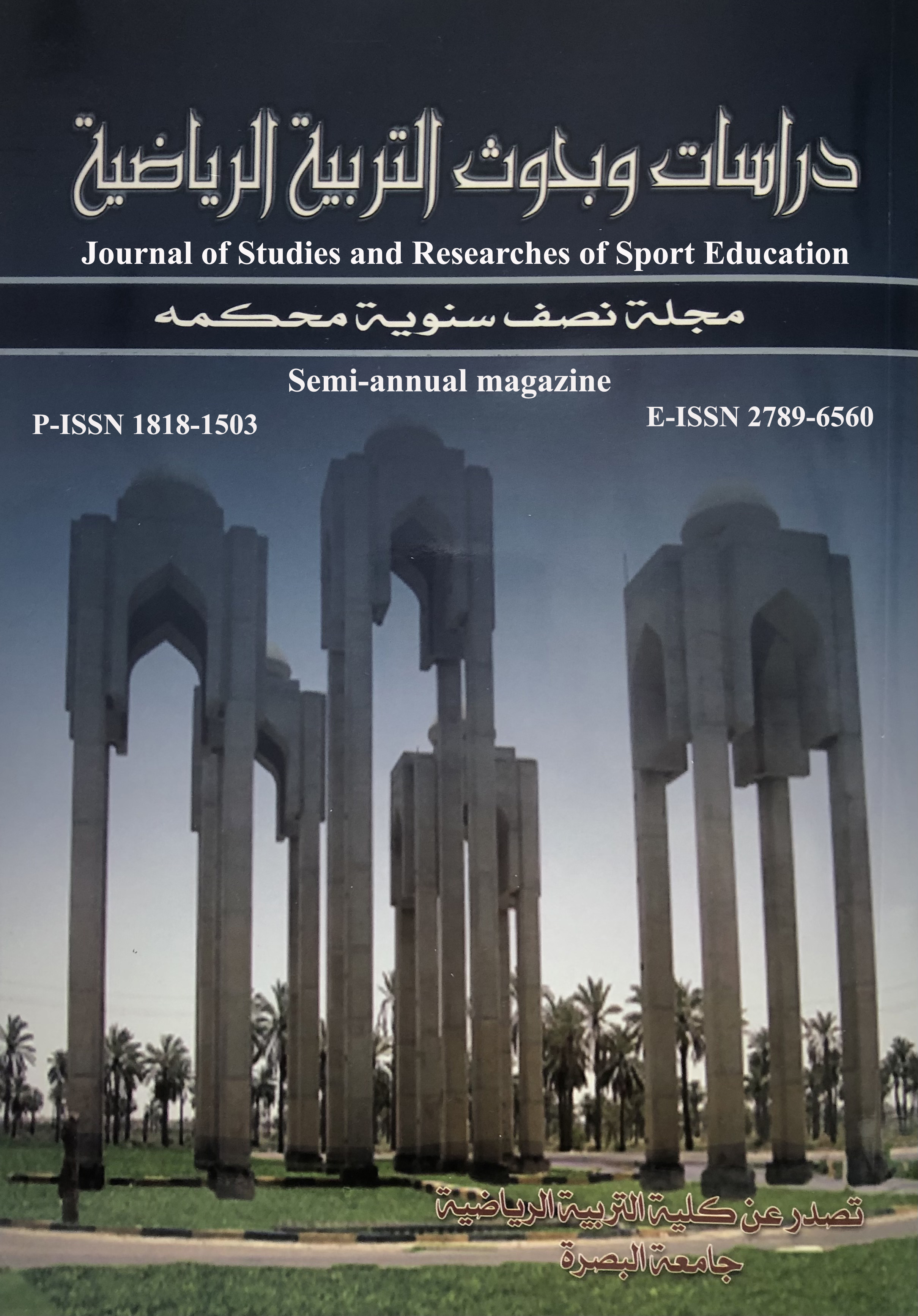
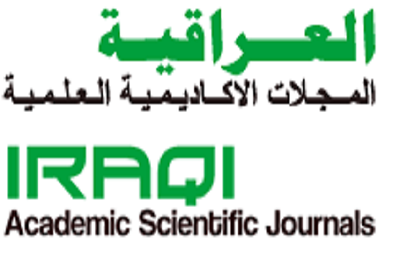 IASJ
IASJ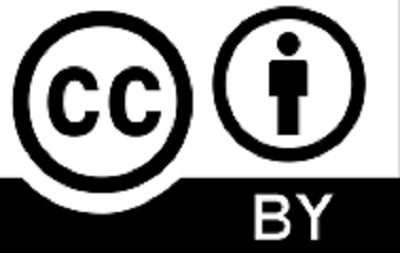 CC-BY-4.0
CC-BY-4.0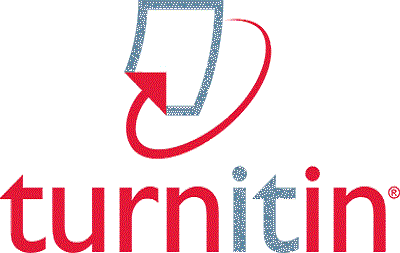 turnitin
turnitin ISSN
ISSN DOAJ
DOAJ Crossref
Crossref GoogleScholar
GoogleScholar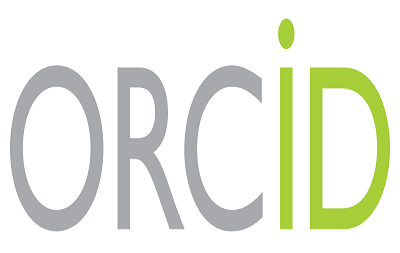 Orcid
Orcid